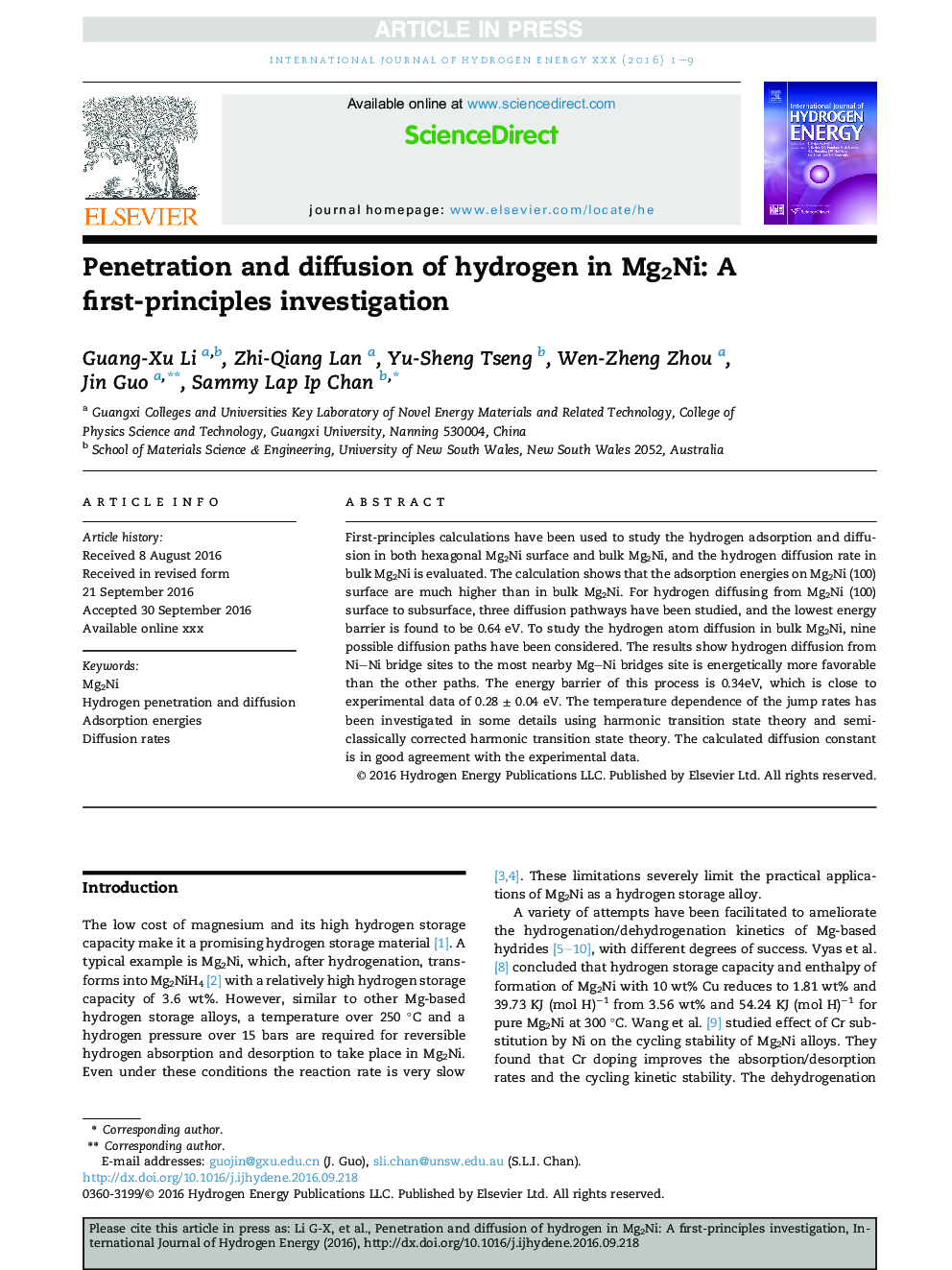| Article ID | Journal | Published Year | Pages | File Type |
|---|---|---|---|---|
| 5148520 | International Journal of Hydrogen Energy | 2017 | 9 Pages |
Abstract
First-principles calculations have been used to study the hydrogen adsorption and diffusion in both hexagonal Mg2Ni surface and bulk Mg2Ni, and the hydrogen diffusion rate in bulk Mg2Ni is evaluated. The calculation shows that the adsorption energies on Mg2Ni (100) surface are much higher than in bulk Mg2Ni. For hydrogen diffusing from Mg2Ni (100) surface to subsurface, three diffusion pathways have been studied, and the lowest energy barrier is found to be 0.64 eV. To study the hydrogen atom diffusion in bulk Mg2Ni, nine possible diffusion paths have been considered. The results show hydrogen diffusion from NiNi bridge sites to the most nearby MgNi bridges site is energetically more favorable than the other paths. The energy barrier of this process is 0.34eV, which is close to experimental data of 0.28 ± 0.04 eV. The temperature dependence of the jump rates has been investigated in some details using harmonic transition state theory and semi-classically corrected harmonic transition state theory. The calculated diffusion constant is in good agreement with the experimental data.
Related Topics
Physical Sciences and Engineering
Chemistry
Electrochemistry
Authors
Guang-Xu Li, Zhi-Qiang Lan, Yu-Sheng Tseng, Wen-Zheng Zhou, Jin Guo, Sammy Lap Ip Chan,
